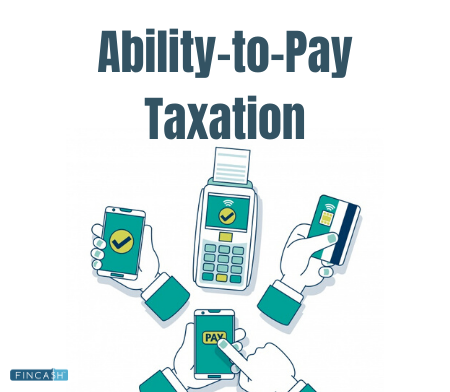
Table of Contents
- Updates on the 7th Pay Commission
- 7th Pay Commission Matrix/Pay Scale
- How to use the 7th Pay Commission Salary Calculator?
- Highlights of 7th Pay Commission
- The 8th Pay Commission
- FAQs
- 1. Do the Commission considers the pensioners of the central government?
- 2. How will the DA be adjusted?
- 3. How does the Commission consider about inflation?
- 4. How was Health insurance incorporated in the Commission’s report?
- 5. Do pensioners’ benefit from the medical changes?
- 6. How much annual increment was suggested by the Commission?
- 7. Did the Commission differentiate between the different departments of the government?
- 8. Is the Pay Commission applicable for state government employees?
- 9. How much gratuity was suggested by the Pay Commission?
Latest Updates on the 7th Pay Commission Pay Matrix
The pay commission is an administrative system appointed by the Government of India. The pay commission has made to review, inspect and recommend desirable and possible changes to salary and its structure. It includes pay, allowances, bonus and other benefits/amenities for the government employees.
Since independence, 7th pay commission has been set up for the government employees to augment their payment structure for all civil and military divisions of the government of India.

Updates on the 7th Pay Commission
The 7th pay commission has been altered and many government employees can avail the benefits. Some of the updates on the 7th pay commission as follows:
LATEST - Pay Hike News
As per reports, the government can take a decision the fitment Factor hike after next year's Union Budget. If the government increases the fitment factor 3 times, then the salary of the employees excluding allowances will be 18,000 X 2.57 = Rs. 46,260. Also, if the demands of the employees are accepted, then the salary will be 26000 X 3.68 = Rs. 95,680. If the government accepts 3 times fitment factor, then the salary will be 21000 X 3 = Rs. 63,000.
November 1, 2022
There is no provision in Central Civil Services (Commutation of Pension) Rules, 1981 for commutation of a percentage of basic pension on a second or subsequent occasion
On 28 October 2022, the DoPT has clarified that the Disciplinary Authorities should clearly indicate in the punishment order whether the two penalties or multiple penalties, would run concurrently or consecutively while awarding second or subsequent penalties during the currency of earlier penalty/penalties.
7 CPC Latest Benefit for Pensioners
After the seventh pay commission, the government has altered the pension limits for both teaching and non-teaching staff of central and state government universities. This decision by the government will benefit 25,000 pensioners of central universities, deemed universities (highly functioning institutions in a particular field of education) and university grants commission (UGC).
Furthermore, eight lakh non-teaching staff have retired from state public service commissions and affiliated universities. If they wish to adopt the pay scales guided for central universities they will gain benefit from the decision.
Impact on House Rent Allowance (HRA)
As per the research paper of the Reserve Bank of India (RBI) department on monetary policy, the augment in the house rent allowance for central government employees under the 7th pay commission has impacted the Consumer Price Index (CPI) Inflation by 35 points at its peak.
The house rent allowance is paid for the cities as follows:
- 30 per cent HRA for the cities with a population of 50 lakh & above
- 20 per cent HRA for the cities with a population between 5 - 50 lakh
- 10 per cent HRA for the cities with a population below 5 lakh
Benefits for Railway Employees
For the first time, Leave Travel Concession (LTC) has availed for the railway employees. The ministry said that the government servants and their spouses working in Indian Railways are not entitled to Leave Travel Concession. The Facility of the free pass is available for them.
Benefits for Central Government employees
Now, central government employees are benefited by a 25 percent increase in the basic pay, but HRA has slightly decreased. The announcement of the government benefited 50 lakh employees and 65 lakh pensioners. However, the central government had increased the payment of the employees 2.57 times to 3.68 times.
Talk to our investment specialist
7th Pay Commission Matrix/Pay Scale
In the 7th pay commission there are advantages to all central government employees. The central government has changed the table for pay level 13.
The fitment factor (Pay band and grade pay) has changed from 2.57 to 2.67 to a particular level and the pay hierarchy has also changed.
| Pay Matrix | Grade Pay (GP) |
|---|---|
| Level 1 to 5 (PB-1 5200-20200) | - |
| Pay Level 1 | GP 1800- starts from Rs. 18,000 (1st stage) & ends with Rs. 56,900 (40th stage) |
| Pay Level 2 | GP 1900- starts from Rs. 19,900 (1st stage) & ends with Rs. 63,200 (40th stage) |
| Pay Level 3 | GP 2000- starts from Rs. 21,700 (1st stage) & ends with Rs. 69,100 (40th stage) |
| Pay Level 4 | GP 2400- starts from Rs. 25,000 (1st stage) & ends with Rs. 81,100 (40th stage) |
| Pay Level 5 | GP 2800- starts from Rs. 29, 200 (1st stage) & ends with Rs. 92,300 (40th stage) |
| Level 6 to 9 (PB-II 9300-34800) | - |
| Pay Level 6 | GP 4200- starts from Rs. 35,400 (1st stage) & ends with Rs. 1,12,400 (40th stage) |
| Pay Level 7 | GP 4600 - starts from Rs. 44,900 (1st stage) & ends with Rs. 1,42,400 (40th stage) |
| Pay Level 8 | GP 4800- starts from Rs. 47,600 (1st stage) & ends with Rs. 1,51,100 (40th stage) |
| Pay Level 9 | GP 5400- starts from Rs. 53,100 (1st stage) & ends with Rs. 1,67,800 (40th stage) |
| Level 10 to 12 (PB-III 15600-39100) | - |
| Pay Level 10 | GP 5400- starts from Rs. 56,100 (1st stage) & ends with Rs. 1,77,500 (40th stage) |
| Pay Level 11 | GP 6600- starts from Rs. 67,700 (1st stage) & ends with Rs. 2,08,200 (39th stage) |
| Pay Level 12 | GP 6600- starts from Rs. 78,800 (1st stage) & ends with Rs. 2,09,200 (34th stage) |
| Level 13 to 14 (PB-IV 37400-67000) | |
| Pay Level 13 | GP 8700- starts from Rs. 1,23,100 (1st stage) & ends with Rs. 2,15,900 (20th stage) |
| Pay Level 13A | GP 8900- starts from Rs. 1,31,100 (1st stage) & ends with Rs. 2,16,600 (18th stage) |
| Pay Level 14 | GP 10000 - starts from Rs. 1,44,200 (1st stage) & ends with Rs. 2,18,000 (15th stage) |
| Level 15 (HAG Scale 67000-79000) | - |
| Pay Level 15 | Starts from Rs. 1,82,000 (1st stage) & ends with Rs. 2,24,100 (8th stage) |
| Level 16 (HAG Scale 75500-80000) | |
| Pay Level 16 | Starts from Rs. 2,05,000(1st stage)& ends with Rs. 2,24,400 (4th stage) |
| Level 17 (HAG Scale 80000) | - |
| Pay Level 17 | The salary structure for the pay level 17 is fixed basic pay of Rs. 2,25,000 |
| Level 18 | (HAG Scale 90000)The salary structure for the pay level 18 is fixed pay of Rs. 2,50,000 |
How to use the 7th Pay Commission Salary Calculator?
The 7th pay commission has a new pay calculation method. It is entirely different from the 6th pay commission. Check the steps to calculate the 7th pay commission.
- Your basic pay incorporating grade pay as on 31-12-2015
- Multiply by a fitment factor of 2.57
- Rounded off to the nearest rupee
- Go to Matrix Table and select your level and grade pay
- Select equal or next higher pay in the matrix level
Highlights of 7th Pay Commission
The 7th pay commission came up with a good note for the government employees. The pay level of every designation has been increased and the fitment factor raised up by 2.57 to 2.67. Check below the latest updates of the 7 pay commission
Payment for Government Employees
The minimum payment for the government employee on the entry-level is increased from Rs. 7,000 to Rs. 18,000. For a newly selected Class I Officer, the salary is increased to Rs. 56,100 per month.
On the other hand, the maximum payment of government employees is Rs. 2.25 lakhs per month for Apex Scale and for Cabinet Secretary and other people working at the same level it is Rs. 2.5 lakhs.
Pay Matrix
In the 7th pay commission the status of the government employee will not be decided by the grade pay, but by the level in the new pay matrix mentioned above.
Work-Related Illness and Injury Leave (WRIIL)
The pay commission pays full pay and allowance to be granted to all employees who are hospitalised due to illness.
The 7th pay commission ensures to avoid partiality and discrimination in the system. The pay commission has recommended a fitment factor ((Pay band and grade pay) of 2.57 for all employees.
Dearness Allowance
The dearness allowance has increased by 2 percent, which may benefit 50 lakh Central Government employees and around 55 lakh pensioners and staffers. Previously, it was 5 percent and now, it went to 7 percent.
Annual Increment
The pay commission has suggested continuing the annual increment of 3 per cent p.a.
Military Service Pay
The 7th pay commission recommends paying MSP to the Defence Personnel. MSP is paid to the people who work in military service in India. MSP will be payable for all ranks inclusive of Brigadiers and people on the same level.
Allowance
The Union Cabinet has examined a total of 196 allowances, which are currently present, but the government has discontinued 51 allowances and continued 37 allowances.
Advances
The 7th pay commission has discontinued at all non-interest bearing advances. It is also significant that the House Building Advance has been increased from Rs. 7.5 lakhs to Rs. 25 lakhs.
Medical Changes
The central government recommended a health insurance Scheme for Central Government employees. It also recommends cashless medical benefits for pensioners outside the Central Government Health Scheme (CGHS) area.
Gratuity
The 7th pay commission recommends the gratuity to be increased from the current Rs. 10 lakh to Rs. 20 lakh. Further, the gratuity may rise by 25 per cent if the Dearness Allowance (DA) rises by 50 per cent.
The 8th Pay Commission
The 8th pay commission may or may not be announced, it totally relies on the government. However, the 7th cpc has just been released and the normal gap between two cpc is 10 years. ideally, there are 6 more years for the 8th pay commission.
FAQs
1. Do the Commission considers the pensioners of the central government?
A: The 7th Pay Commission altered the ceiling limit of the pension payable to teaching and non-teaching staff who earlier were Central Government employees. The decision helped 25,000 employees of the Central Government.
2. How will the DA be adjusted?
A: The Dearness Allowance or DA was increased by 2%. DA was already at 5%. Hence, another increase of 2% means the DA was adjusted to be 7% as per the 7th Pay Commission.
3. How does the Commission consider about inflation?
A: The 7th Pay Commission suggested pay hikes to government employees based on the inflation rate. It is calculated using the Aykroyd formula, considering the three basic needs of man while calculating Income hike.
4. How was Health insurance incorporated in the Commission’s report?
A: As per the 7th Pay Commission, a health insurance scheme was recommended for all Central Government employees. Hospitals were brought under the purview of the insurance scheme.
5. Do pensioners’ benefit from the medical changes?
A: Yes, the pensioners do benefit from the medical changes suggested by the Commission. The Commission also recommended that pensioners be brought under the Central Government Health Scheme (CGHS).
6. How much annual increment was suggested by the Commission?
A: The Commission requested the salaries of the employees to be revised. The revised allowance provides the employees with a nearly 25% hike in their salaries. The annual increment would remain constant at 3%, as suggested by the 6th Pay Commission.
7. Did the Commission differentiate between the different departments of the government?
A: The pay scale for employees would depend on whether the person was in the defense department or a civilian. In the defense department, depending on the level, the pay scale will differ. Amongst civilian employees, the pay scale will Range from Rs. 29,900 to Rs. 1,04,400 per month, depending on the post. The grade pay will vary from Rs. 5,400 to Rs. 16,200 per month.
8. Is the Pay Commission applicable for state government employees?
A: Although the 7th Pay Commission was set up to restructure the pay scale of Central Government employees, yet some state governments revised their pay structures as per the Commission's recommendations. It is not strictly applicable, but many state governments follow the Commission's proposals to restructure their employees' pay scale.
9. How much gratuity was suggested by the Pay Commission?
A: The 7th Pay Commission suggested an increment of gratuity to Rs. 20 lakhs from Rs. 10 lakhs. For employees, the gratuity is payable after retirement and is exempt from income tax.
All efforts have been made to ensure the information provided here is accurate. However, no guarantees are made regarding correctness of data. Please verify with scheme information document before making any investment.












